Traditional Turkish Archery:
An Exploration of History & Culture
Traditional Turkish Archery:
An exploration of History & Culture
By Tom @ Asiatic Bows
Traditional Turkish archery stands as a captivating tapestry woven with threads of history, culture, and skill.
This ancient art, deeply rooted in the traditions of the Ottoman Empire and beyond, offers a window into a world where archery was more than just a sport—it was a way of life.
As we embark on this exploration of traditional Turkish archery, we will journey through its historical background, delve into its unique equipment and techniques, uncover the rigorous training methods employed by its practitioners, and witness its modern revival in today’s world.
Join us as we unravel the intricate layers of this fascinating discipline, celebrating its enduring legacy and cultural significance.
Turkish Ottoman Empire
Throughout history, depictions of archery in statues, paintings, and other forms of art showcase its significance.
These brilliant stories that are told through paintings which show archers with bows in hand, offers us a glimpse into the importance of Archery in years past.
As a discipline that combines physical prowess, mental focus, and technical skill, archery has transcended mere survival or sport to become an embodiment of precision, discipline, and cultural heritage.
When we delve into the traditions of Turkish and Ottoman archery, we’re shown a unique adaptation, a culturally-engrained appreciation for the skill, and a hyper-focused discipline that encourages pursuing mastery of the skill.
The Turkish Ottomans truly cemented themselves as a culture with an affinity for traditional horse archery, while also adding another layer to archery’s global significance.
Historical Background
During its peak, the Ottoman Empire controlled lands from South-eastern Europe to Western Asia.
During this time the Ottoman Empire had an unmatched level of wealth, power, and influence throughout the region. The 16th and 17th centuries were truly the time of the Ottomans, and helped cement their place in history.
This era of prosperity and success is primarily attributed to the time spent under the rule of Suleiman the Magnificent and his successors.
The Ottomans were in control of key trade routes between Europe and Asia. This further bolstered the wealth and prosperity of the empire – allowing improvements in administrative efficiency, military advances, and cultural inclusivity.
Suleiman’s cultural acceptance of cultural diversity and acceptance within the Ottoman Empire allowed many to flourish under their rule. The importance placed in Guilds and master crafters helped ensure creativity and innovation would occur.
The cultural acceptance from the ruling class allowed the Empire to function as a melting pot of diverse traditions, languages, and religions. This cultural diversity helped achieve an impressive advancement in the guild system, intellectual studies, and spiritual growth.
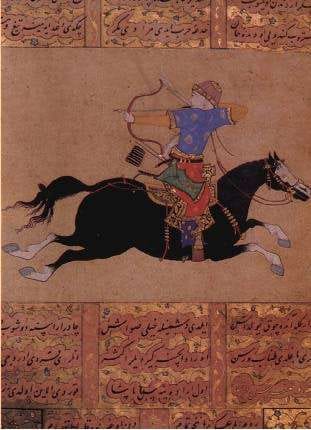
Due to the regions that the Ottoman Empire occupied, Archery was an ingrained part of life and recreation and played a pivotal role in both military and cultural spheres.
Paul E. Klopsteg’s seminal work “Turkish Archery and the Composite Bow” (1947) provides an exhaustive review of Turkish archery. It delves into the meticulous crafting of composite bows and the sophisticated techniques passed down through generations.
Horse archery stood out as a hallmark of Ottoman military prowess. There are historical examples and records of the rigorous training, unique tactics, and specialized equipment used by Ottoman horse archers, which in part explains their mastery over horseback shooting and how that made them formidable opponents in battles and crucial figures in ceremonial events.
Techniques and Equipment
Composite Turkish Bows – Tatar Bows
Composite bows were the cornerstone of Turkish and Ottoman archery. The exact materials used to create these bows varied by location, however they contain the same type of layered materials:
Wood, Horn and Sinew.
The layered materials were used to combine power and flexibility, which ultimately made them superior to many other bow designs.
Their compact size and incredible power characterized by their layered construction of materials like wood, horn, and sinew, allowed their arrows to fly at incredible speeds with unmatched power.
Ralph Payne-Gallwey’s “The Book of the Crossbow” (1903) elucidates the intricacies of these bows, emphasizing their lightness, power, and accuracy.
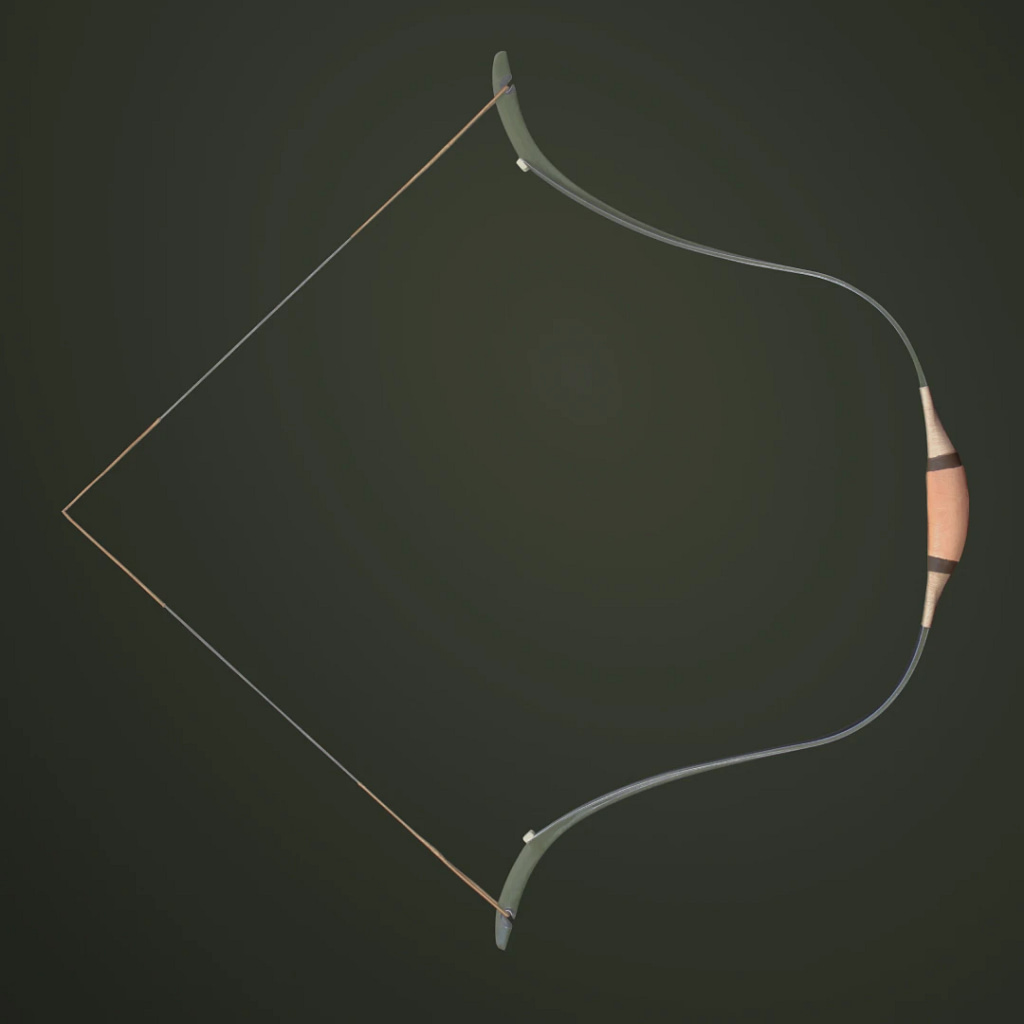
Turkish Bows
Traditional Turkish Bows, also commonly referred to as Horse Bows, are generally a composite bow made from Wood, Sinew and Horn. We also have Tatar bows, which are a type of Ottoman Turkish Bow.
These bows are more of a short length compared to other Asiatic varieties, and generally feature a more pronounced recurve in the limbs.
Turkish Horse Bows are powerful, accurate, and incredibly effective. They are some of the best bows in their class.
Turkish Quivers for Horse Archery
In the Ottoman Empire, horse archery quivers were typically made from high-quality leather – such as horse or cowhide leather. This meant the hides were durable and could withstand the rigors of military use.
The leather was often treated and cured to make it more resistant to wear and tear.
Additionally, Ottoman quivers were sometimes embellished with decorative elements, such as intricate patterns, embroidery, or metal fittings. This functioned as a way to showcase the empire’s craftsmanship and artistic traditions. These decorative elements not only enhanced the aesthetic appeal of the quivers but also reflected the status and rank of the archer.
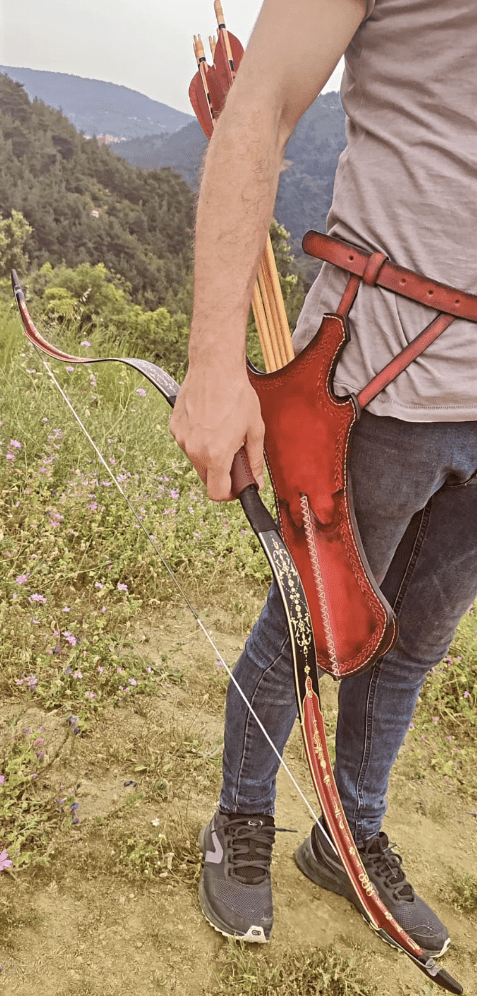
Traditional Turkish Quiver by METBOW
Thumb Rings and their Significance
Thumb rings held a special place in Turkish and Ottoman archery, serving both functional and symbolic roles.
Unlike Western archery styles that utilize three fingers to draw the string, Turkish archers employed thumb rings.
This revolutionized the shooting technique, allowing for an easier way to shoot on horseback, smoother release and reduced finger strain during extended shooting sessions.
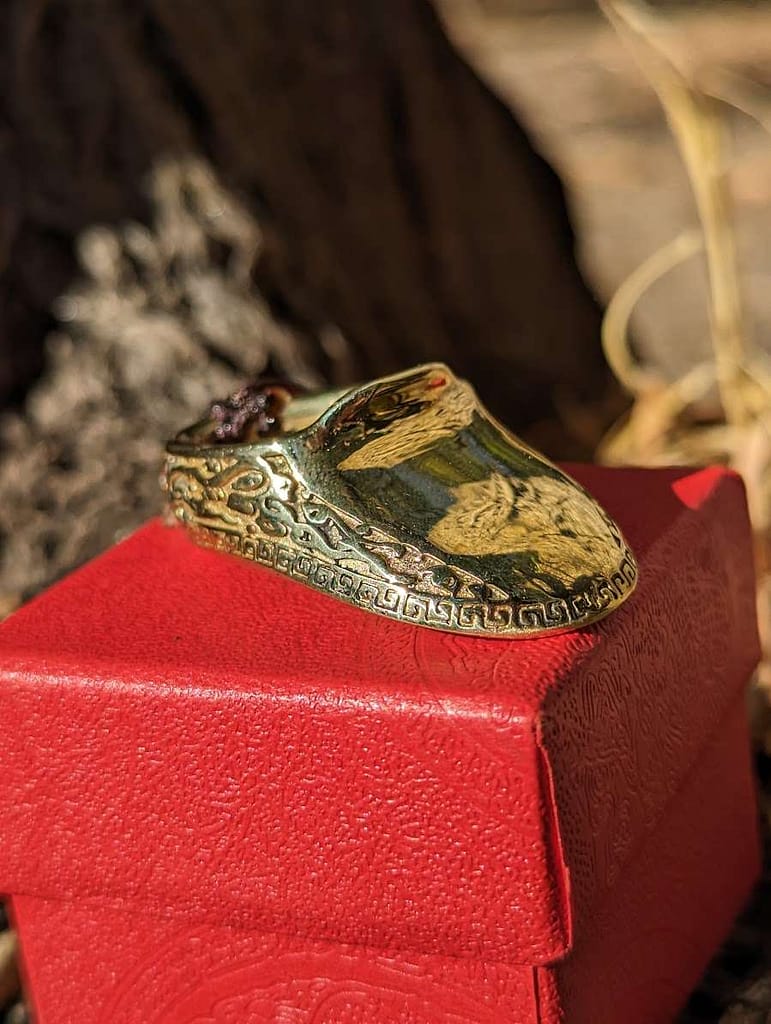
Traditional rings were made of many different materials, such as Horn, Brass, and other metals. In modern times many have opted to use Plastic thumb rings as a more cost effective option.
Thumb rings were not only functional; they also served as symbols of social status and rank. Elaborately designed rings often adorned with precious metals and gemstones were indicative of a person’s wealth, power, or military rank. They were often crafted with intricate patterns and inscriptions, showcasing the artisan’s skill and the wearer’s prestige.
Historical paintings and artworks provide visual evidence of the importance of thumb rings in Turkish and Ottoman society.
Portraits of rulers and nobility often depict them wearing their thumb rings, underscoring their significance. These depictions serve as a testament to the widespread use and cultural acceptance of thumb rings across different strata of society.
Training and Practice
The Ottoman Empire placed significant emphasis on archery as a fundamental military skill, alongside swordsmanship and horsemanship. Known as “Mancılık” or “Tirhane,” the Ottoman archery training regimen was rigorous and well-structured.
New recruits began with basic training to learn the fundamentals of archery, including stance, grip, and posture. They were also shown how to handle and maintain their bows and arrows. As they advanced, soldiers practiced shooting techniques for both short and long ranges. After learning how to shoot in different stances and different ranges, they eventually began training on horseback. Endurance and strength training were also crucial, and these soldiers were required to practice and build the necessary muscles and stamina. This was generally done through physical exercises and extended shooting sessions.
A unique feature of Ottoman military training was the emphasis on horseback archery. Soldiers were trained to shoot arrows accurately while riding at various speeds and directions. This skill was particularly valuable in the Ottoman’s nomadic and cavalry-based warfare. Tactical training and coordination was another essential component. Teaching archers how to coordinate with other military units to maximize their effectiveness on the battlefield was crucial.
Various historical sources, such as “Archery and Crossbow Guilds in Medieval Flanders, 1300-1500” by Laura J. Watt and “The Archers of Islam: A Short History of the Turkish Bow” by Robert Elgood, offer insights into the development and techniques of Ottoman archery.
Additionally, Ottoman military manuals and treatises from the period provide detailed instructions on archery training. These were primarily written by military commanders and scholars of the time.
Online resources like the Turkish Traditional Archery Association offer valuable information on Ottoman archery techniques and equipment.
Modern Revival
In recent years, there has been a resurgence of interest in Traditional Turkish Archery, with organizations and clubs dedicated to its practice and preservation.
Most western archers who are newcomers to Asiatic Archery will have seen or heard of the name Armin Hirmer.
Armin is an Archery coach, and YouTube content creator who is nearing 100k subscribers. His popularity is due to his content related to Asiatic archery, bow reviews, and guides for new shooters.
Armin’s passion for Asiatic archery, paired with his relentless pursuit of knowledge about Traditional Archery, and furthermore, his eagerness to share what he has learned with his viewers, makes him stand out as a modern-day ambassador for traditional asiatic archery. He is playing a critical role in maintaining interest in the traditional ways of archery.
In Sydney, Australia, Ahmed Karat and a team of passionate archers from Maydaan Archery Club are working to ensure that traditional Ottoman archery, and the culturally significant teachings are kept alive through their club and its members. Their work ensures that the youth at their club are learning the mindful teachings related to Archery in the eastern world.
Traditional Turkish Archery: Conclusion
Turkish, Ottoman, and Asiatic archery offer a captivating journey through history, encompassing military strategy, cultural practices, and social dynamics. The meticulous crafting of composite bows, the innovative use of thumb rings, and the mastery of horseback shooting stand as testaments to the skill of archers from these regions.
Museums, academic works, and historical artworks provide invaluable insights into this rich heritage, underscoring the importance of preserving and celebrating the art of archery for generations to come. Through these endeavours, the legacy of Turkish, Ottoman, and Asiatic archery continues to thrive, inspiring new generations of archers and enthusiasts worldwide.
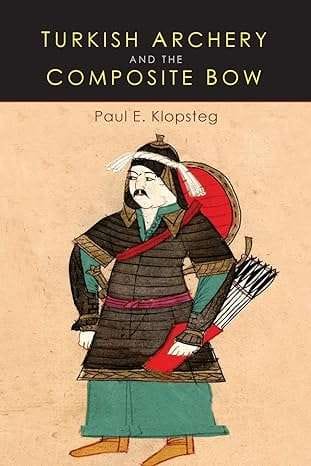
Pingback: Historical Archery: Asiatic Bows vs. Traditional Longbows